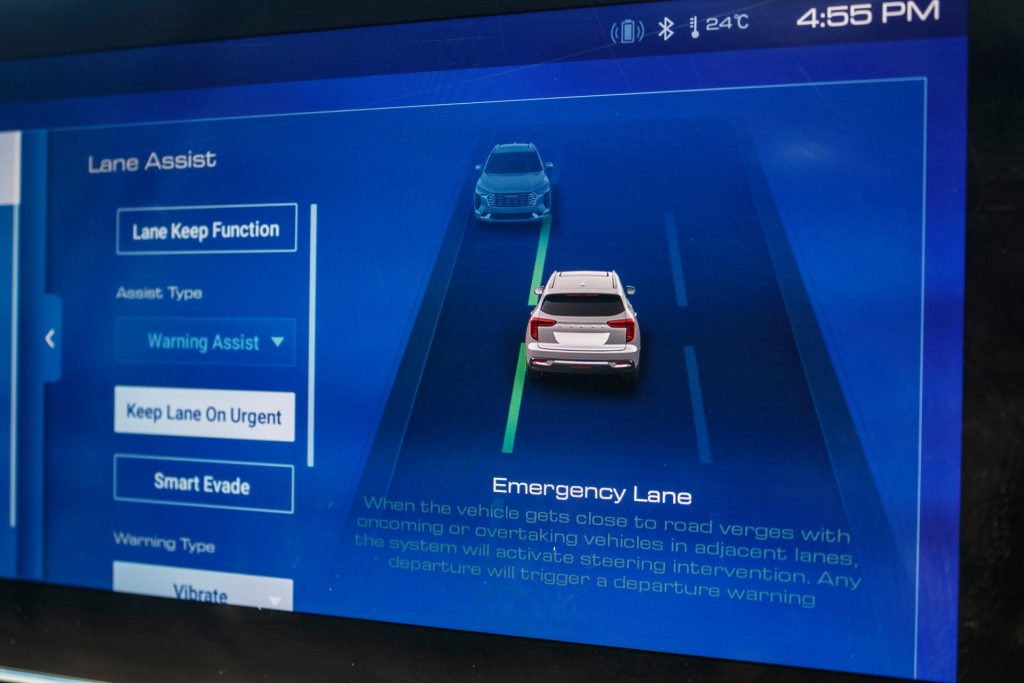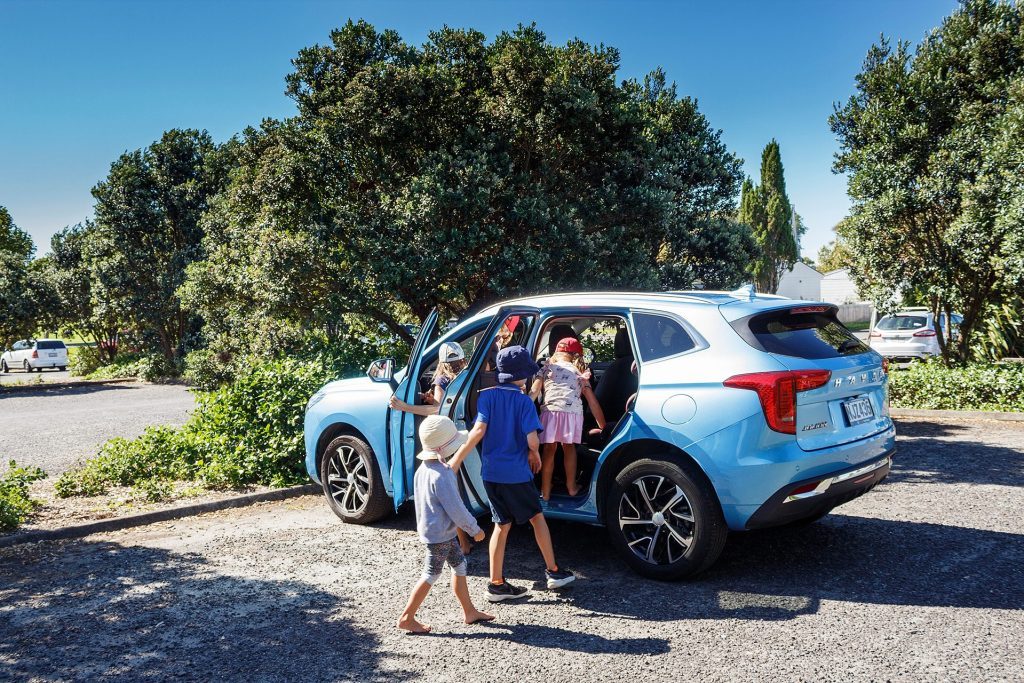In everyday driving, it makes a decent fist of things with reasonable ride quality and easy steering. When the facelift comes, we’d like to see the transmission recalibrated. There is too much of an emphasis on ensuring the initial take up and shifts are smooth, so you get more ‘slurring’ of the clutches than desirable. A bit more urgency would be beneficial here for a positive engagement and drive.
The engine itself is perky, there’s not too much in the way of turbo lag, and it’s helped by a solid midrange from its 1.5-litre capacity. While at times it can feel lethargic, it’s usually the transmission that’s taking it’s time to sort itself. That’s why we reckon a re-tune of the shifting strategy would help in myriad ways.
Jolion’s fuel use is slowly improving as the kays tick over but it’s still on the thirsty side with an average of 10L/100km. It gets by on the cheaper grade of gas, thankfully.

We’ve become accustomed to, and quite quick at, disarming the lane keeping function of the Jolion. This takes three taps on the touchscreen and then its lane centring system is muted. This too, is in need of a recalibration; it’s too quick to nudge you back into the dead centre of the lane. It can become insistent on the motorway. At these speeds, the other nannying safety minder raises its beepy voice. This can get as infuriating as an unexpected item in the bagging area, and while you can’t disable this anti-tailgater device, you can circumvent it by turning on the active cruise. Then the car is responsible for maintaining the distance to those in front, and it does so adequately.
Jolion has an easy clean interior, the carpets relinquishing what muck gets accumulated in the footwells without the need for an industrial-strength vacuum. The seats are quickly wiped clean, the faux leather trim seems to be hard wearing, as is the rest of the cabin, with no surfaces that are easy to rough up. And no trim pieces have fallen off. There’s not even a rattle to be heard which is reassuring. Those seats are comfy too; it’s easy to find the right driving position though the steering wheel adjustment could give a little more range. The make-believe trim heats up in the sun however; beware when wearing your stubbies, as the seat surfaces are quite warm when you first hop in. A/C cools the cabin effectively, though it would be great if the ventilation menu of the touchscreen was easier to summon; you have to lean over and touch a tiny button on the left side of the screen. This is a legacy of its LHD origins.
No complaints about the space on offer though, the rear quarters proving spacious enough for our primary school-aged kids. The boot is generous too, and the space easily expanded by dropping the seats. We can live with the lack of powered tailgate operation too. It really is no big deal to lift the hatch up, even when you have your hands full.



